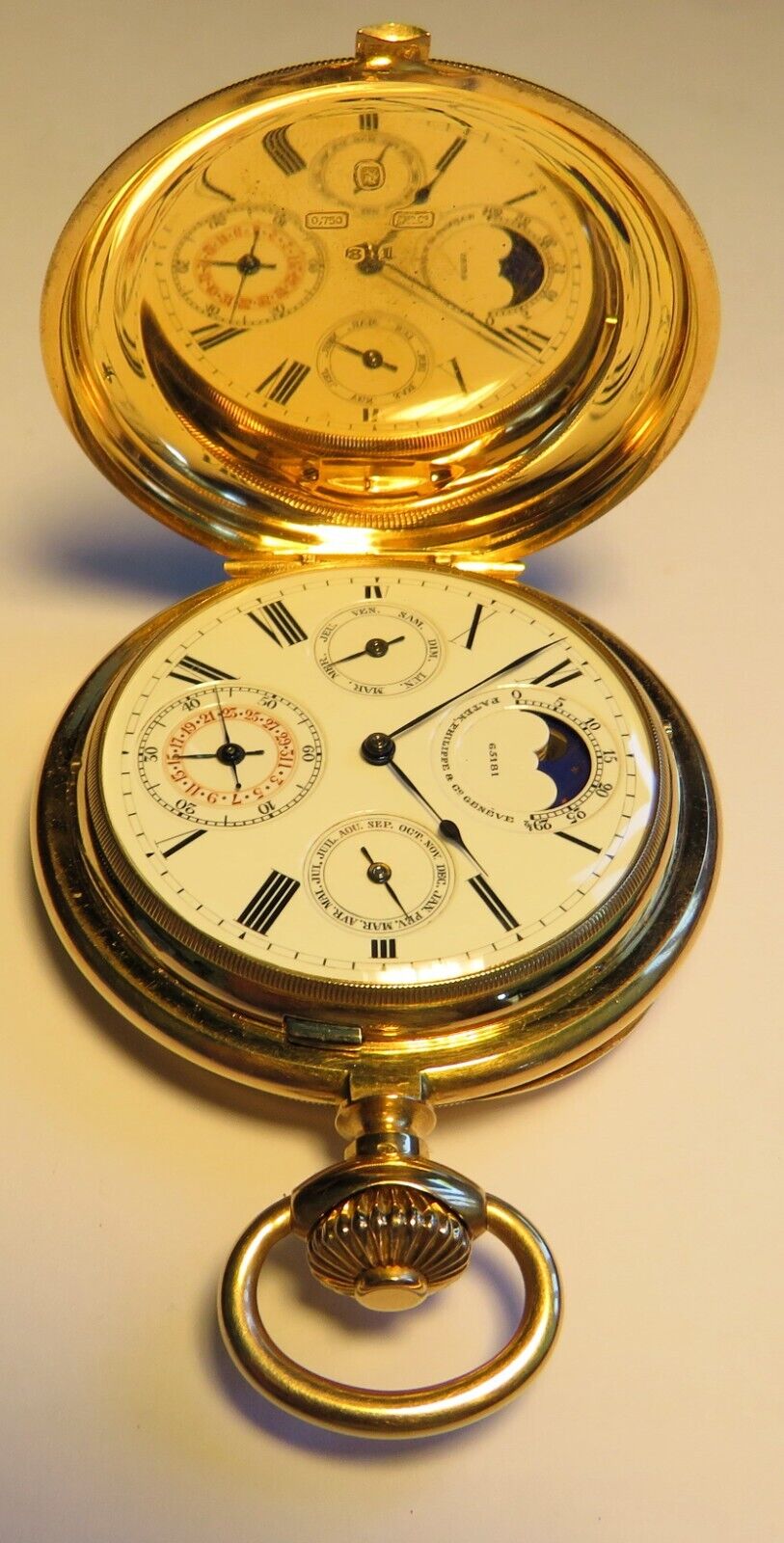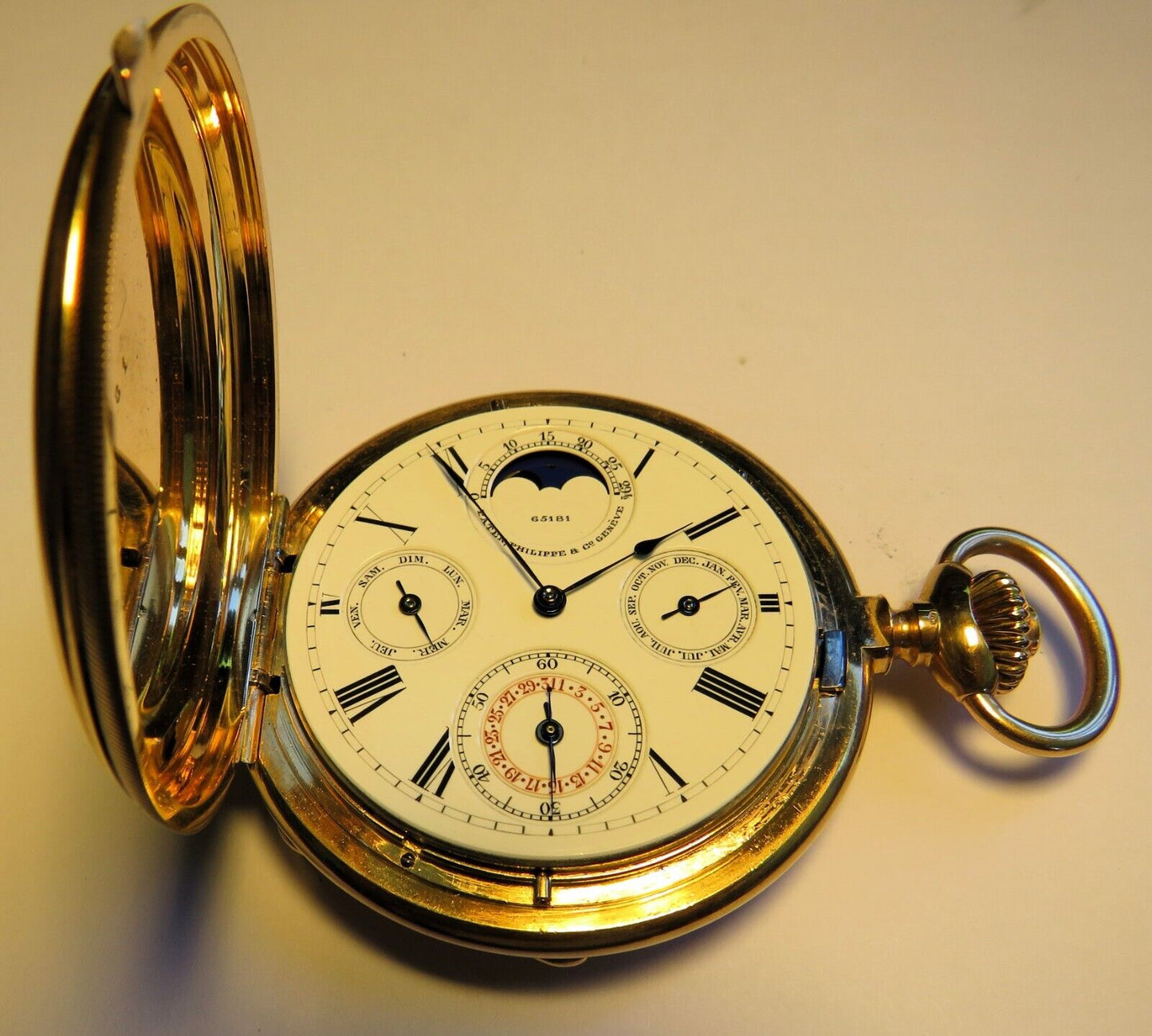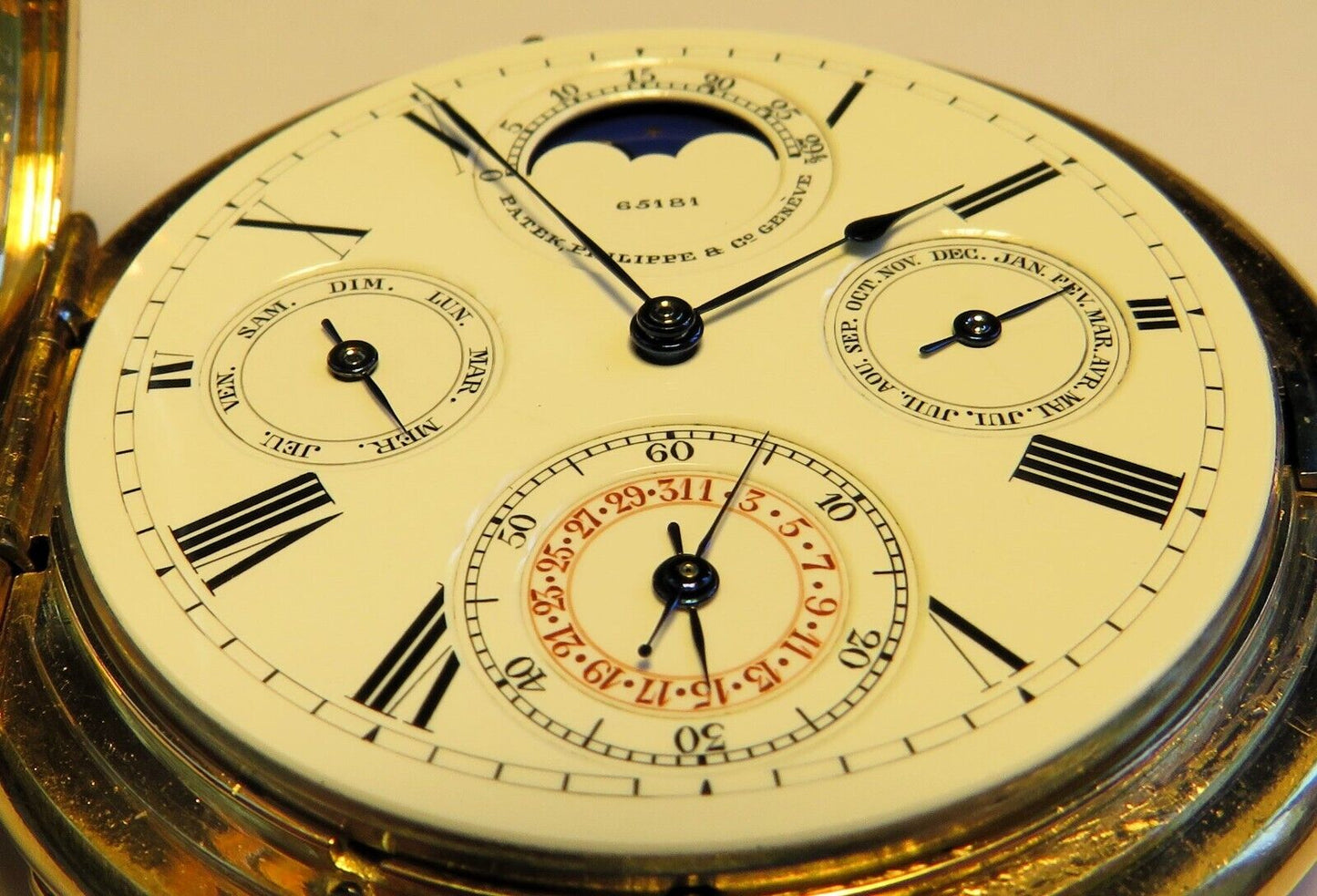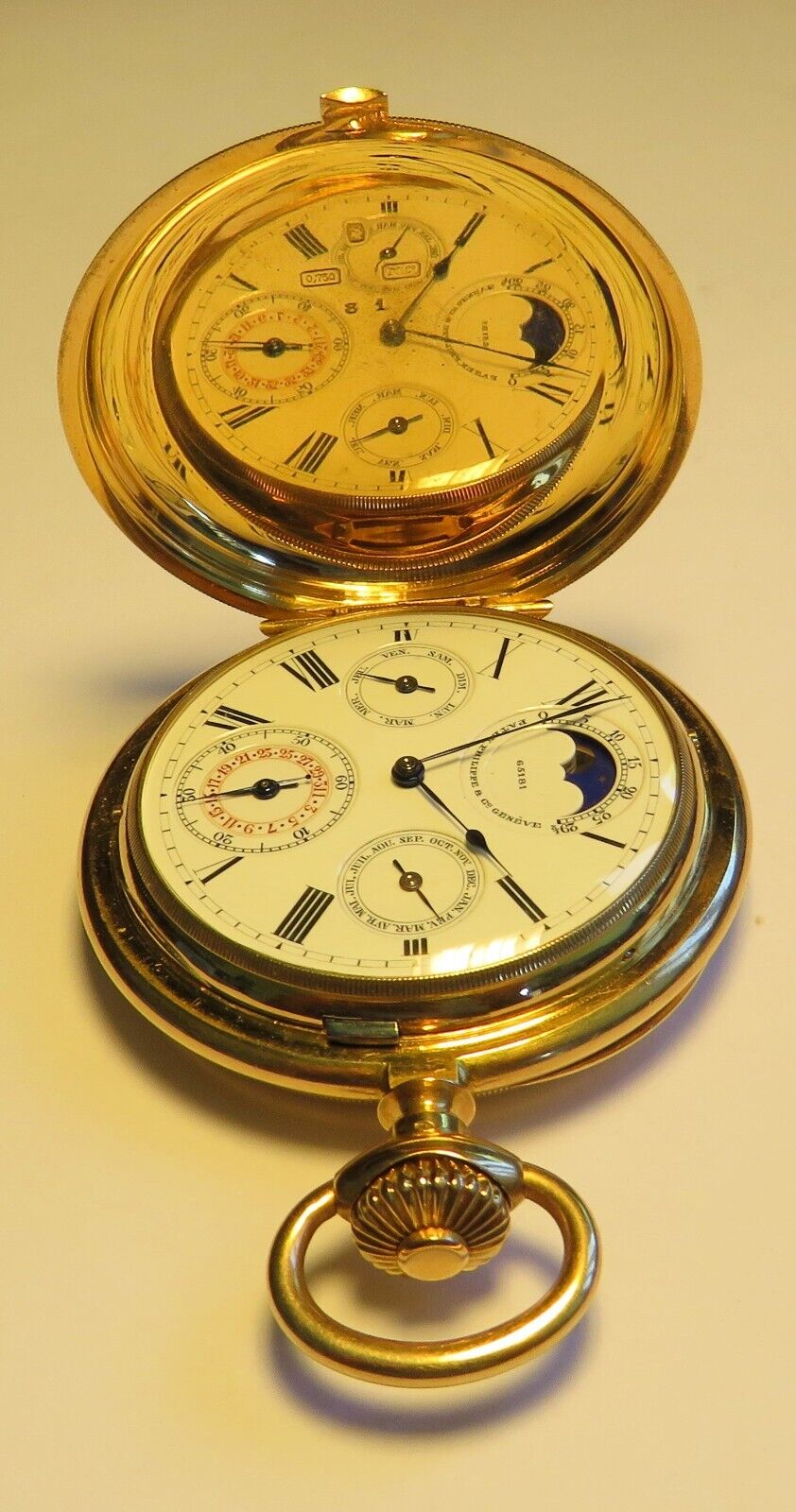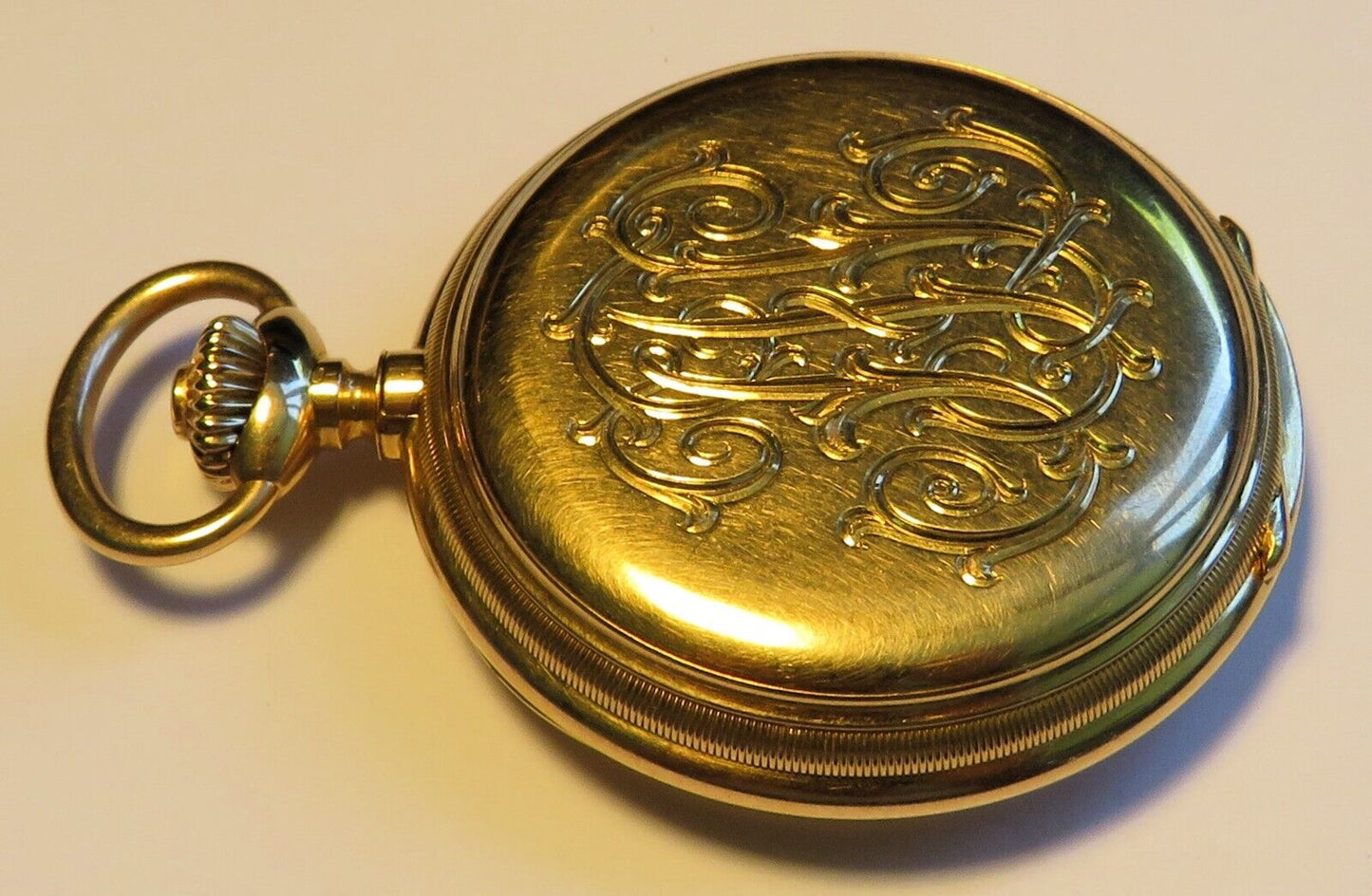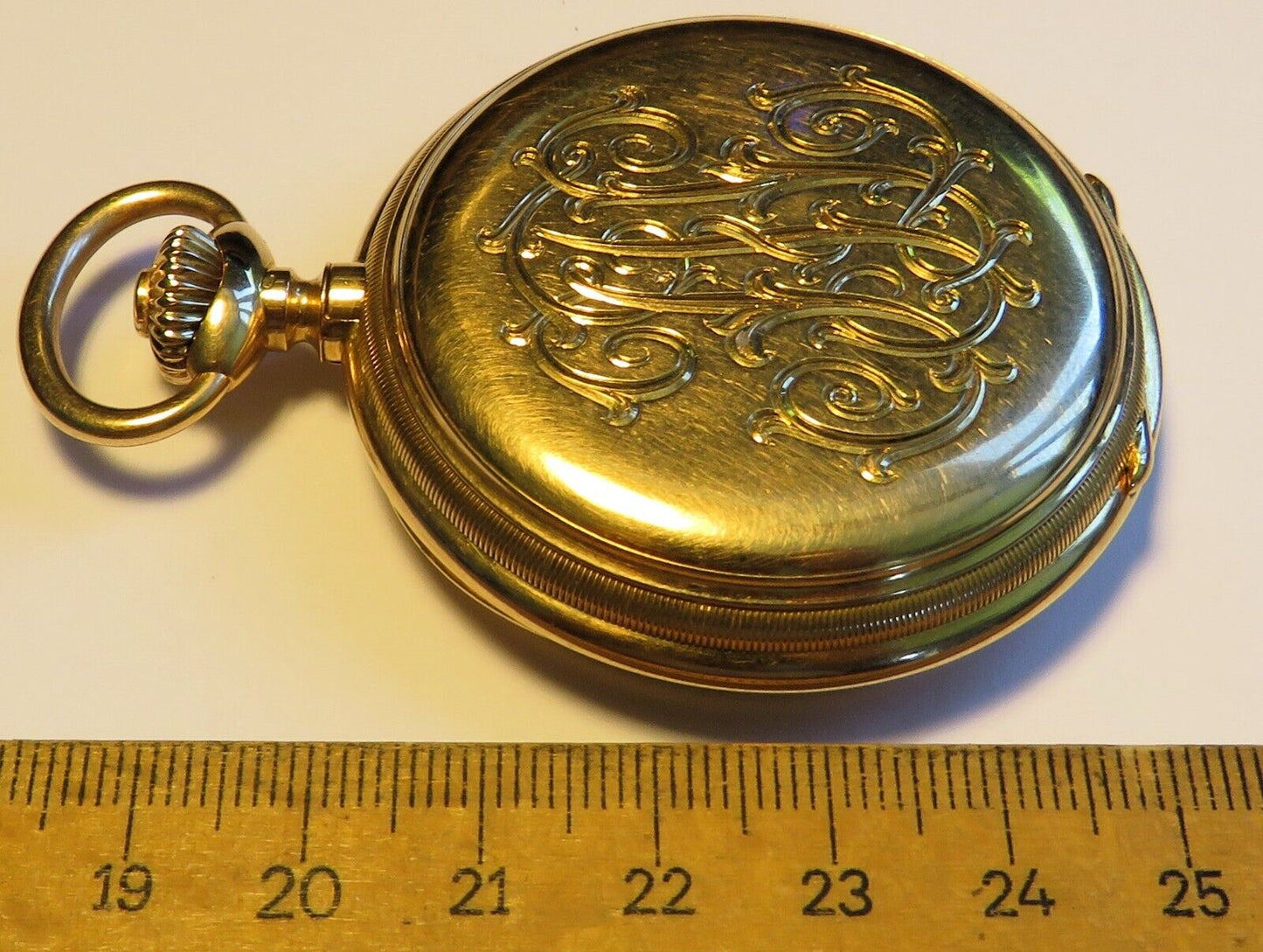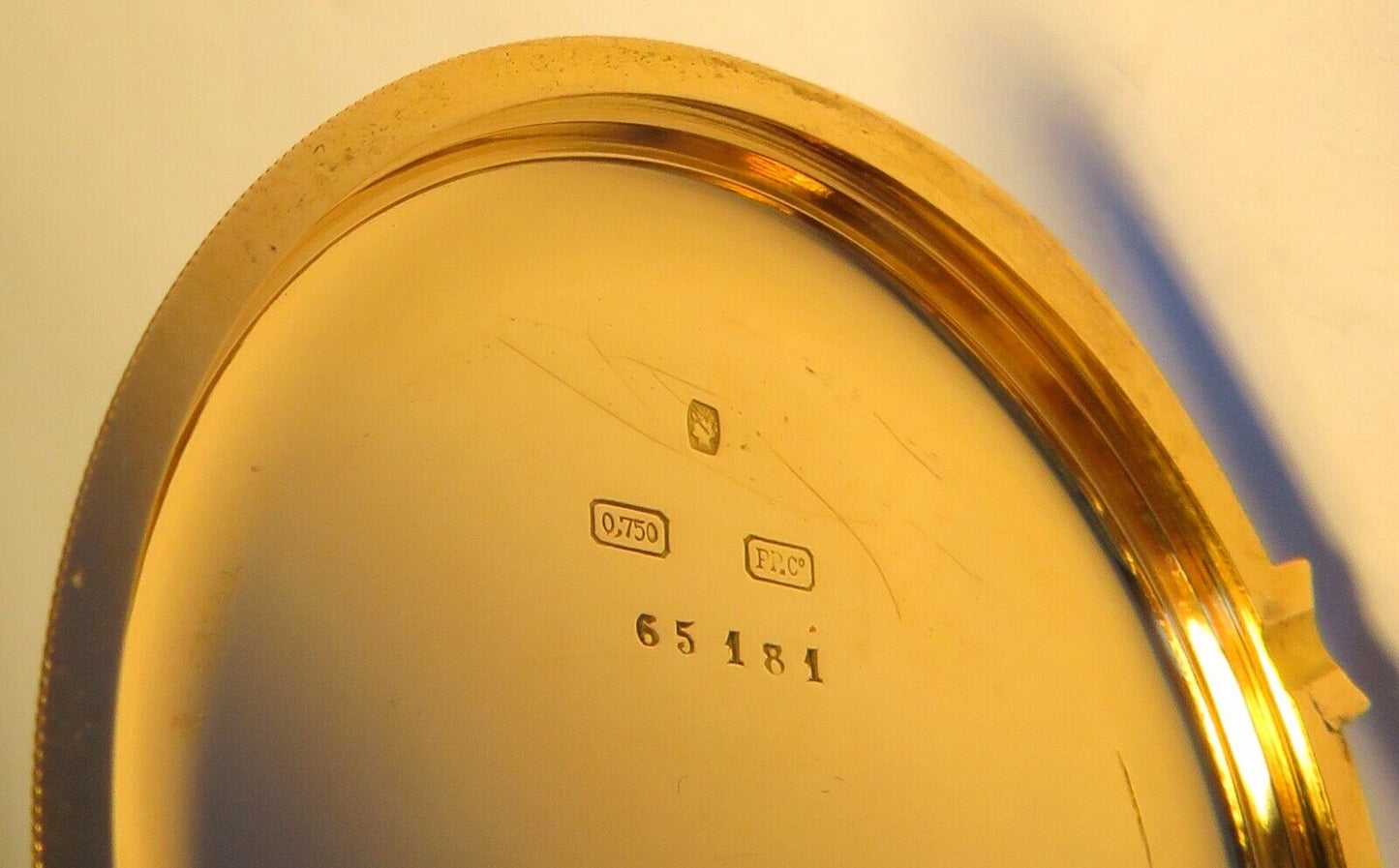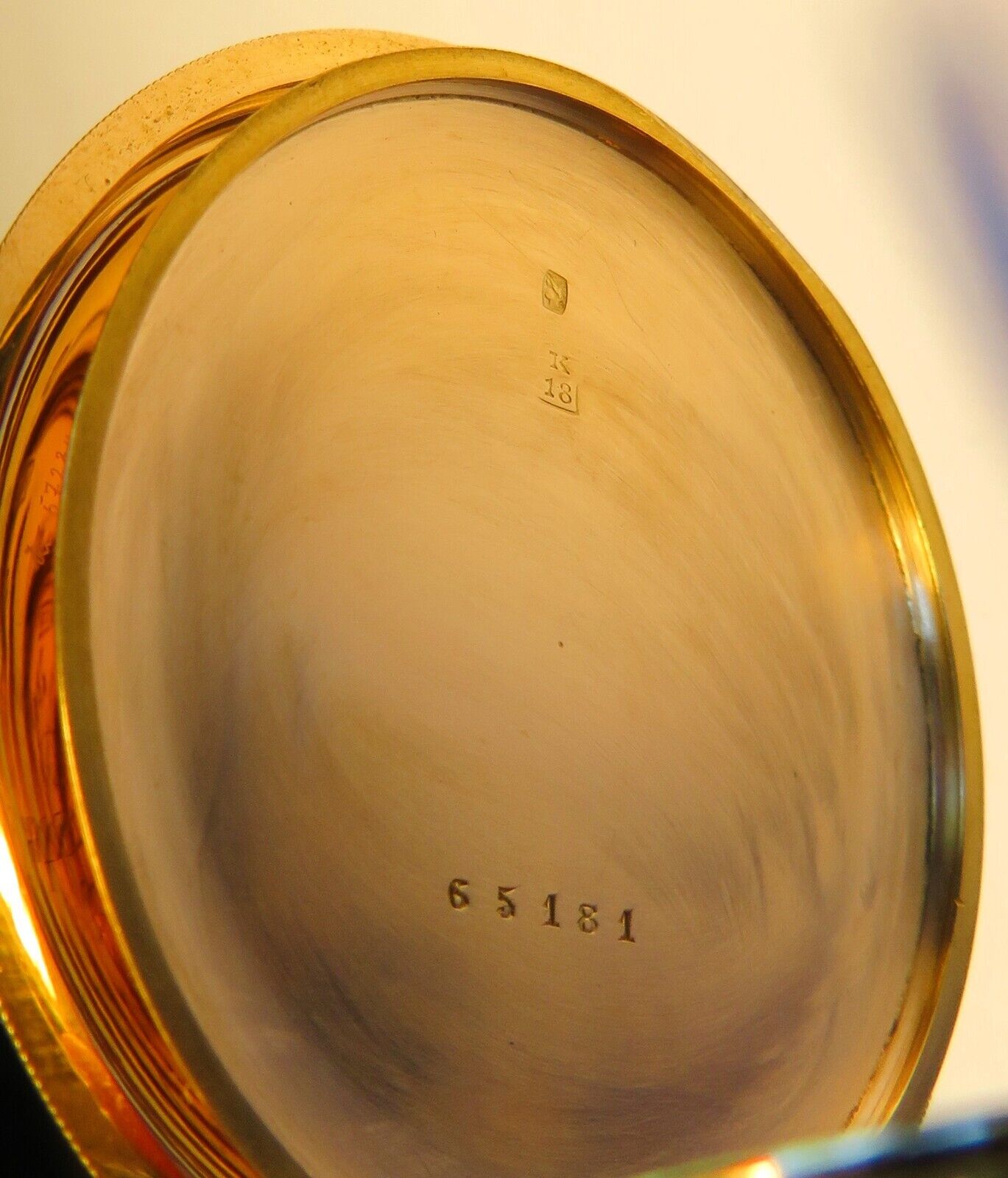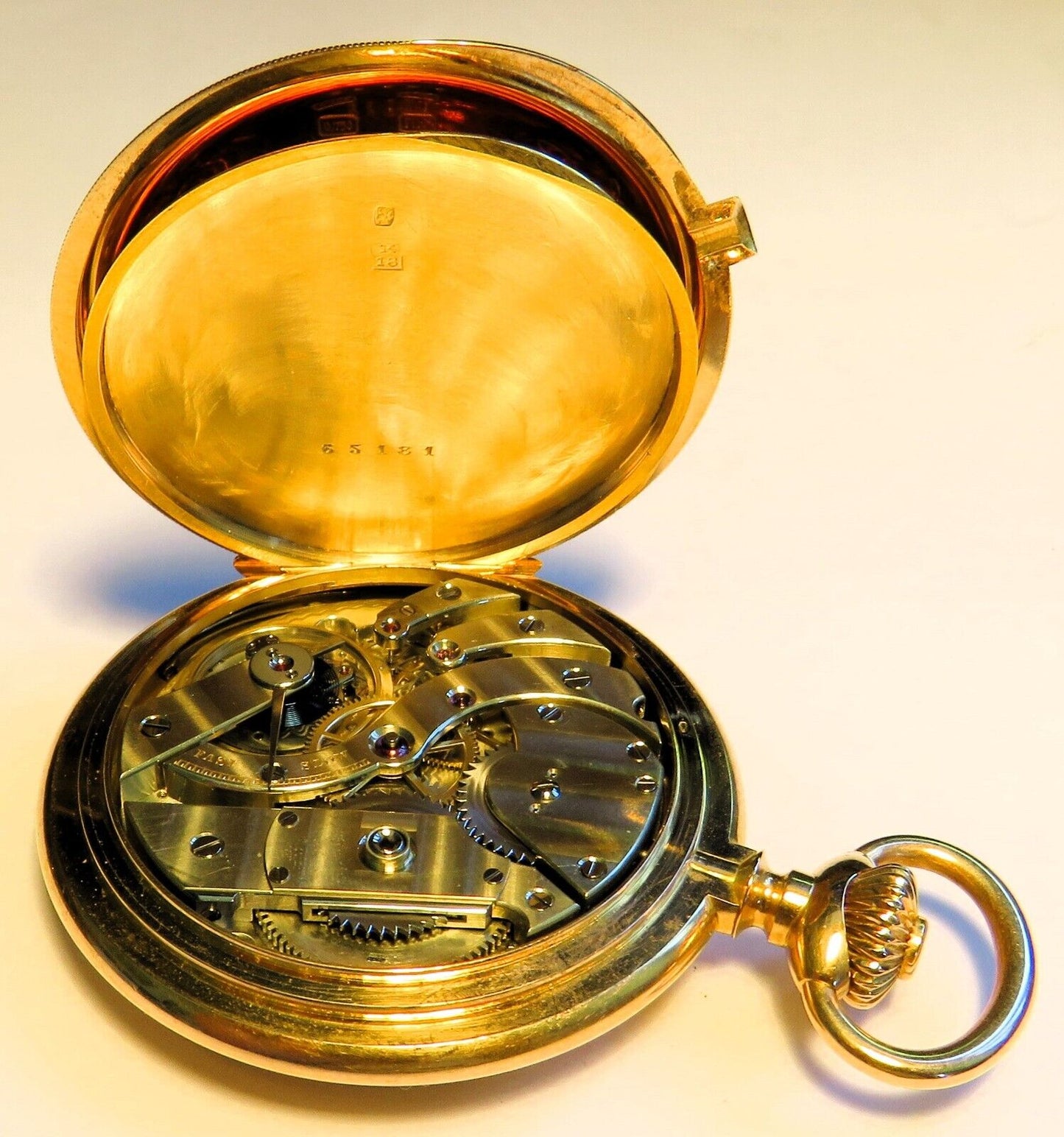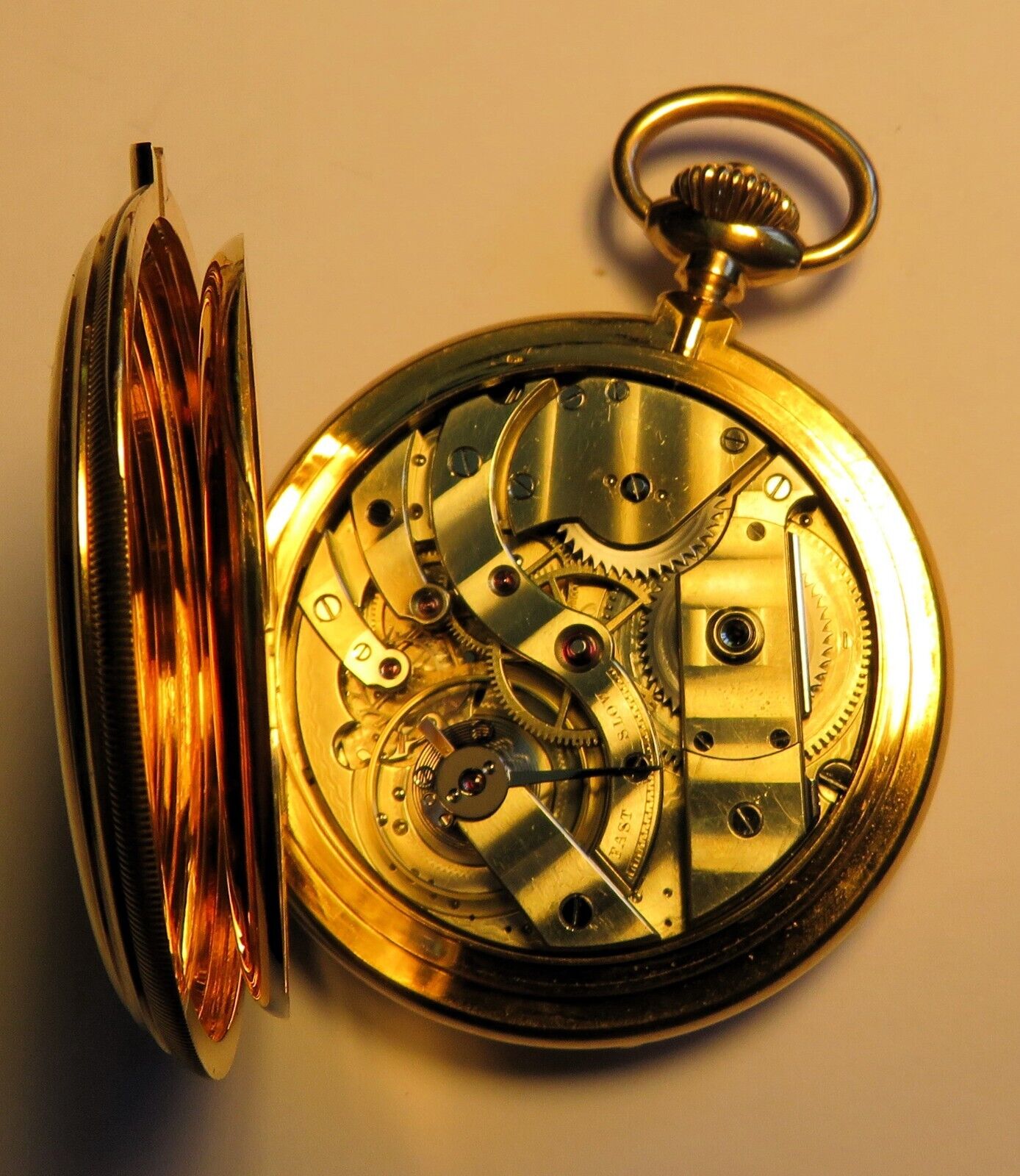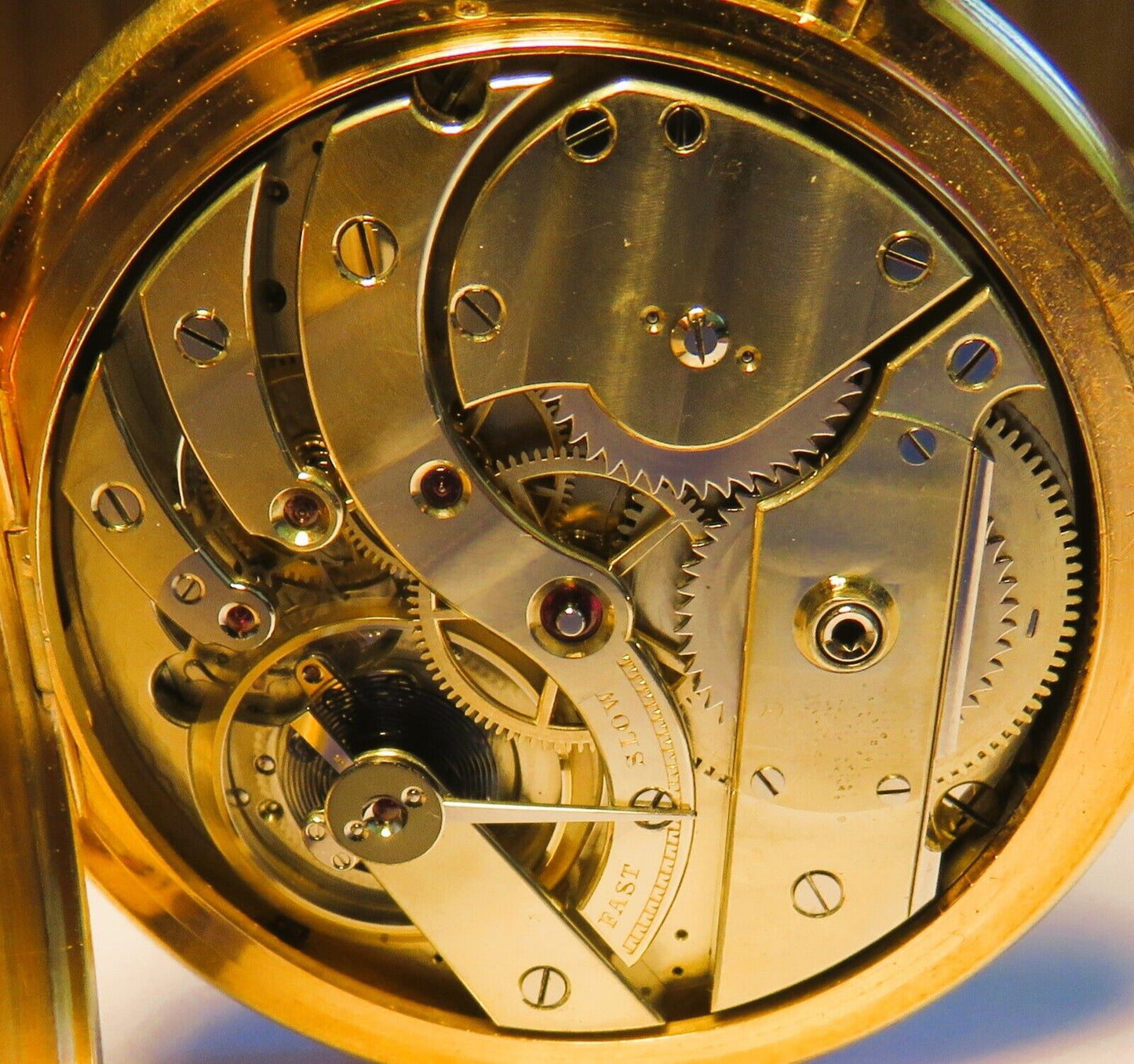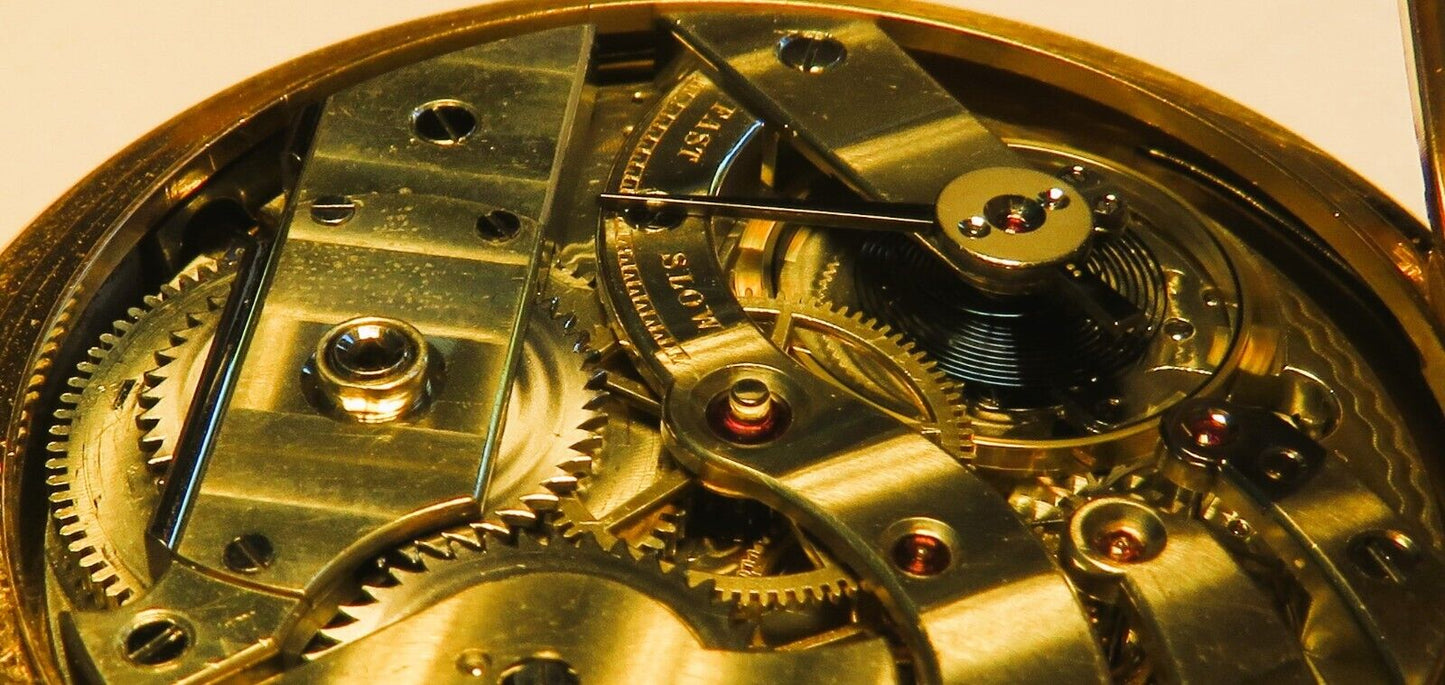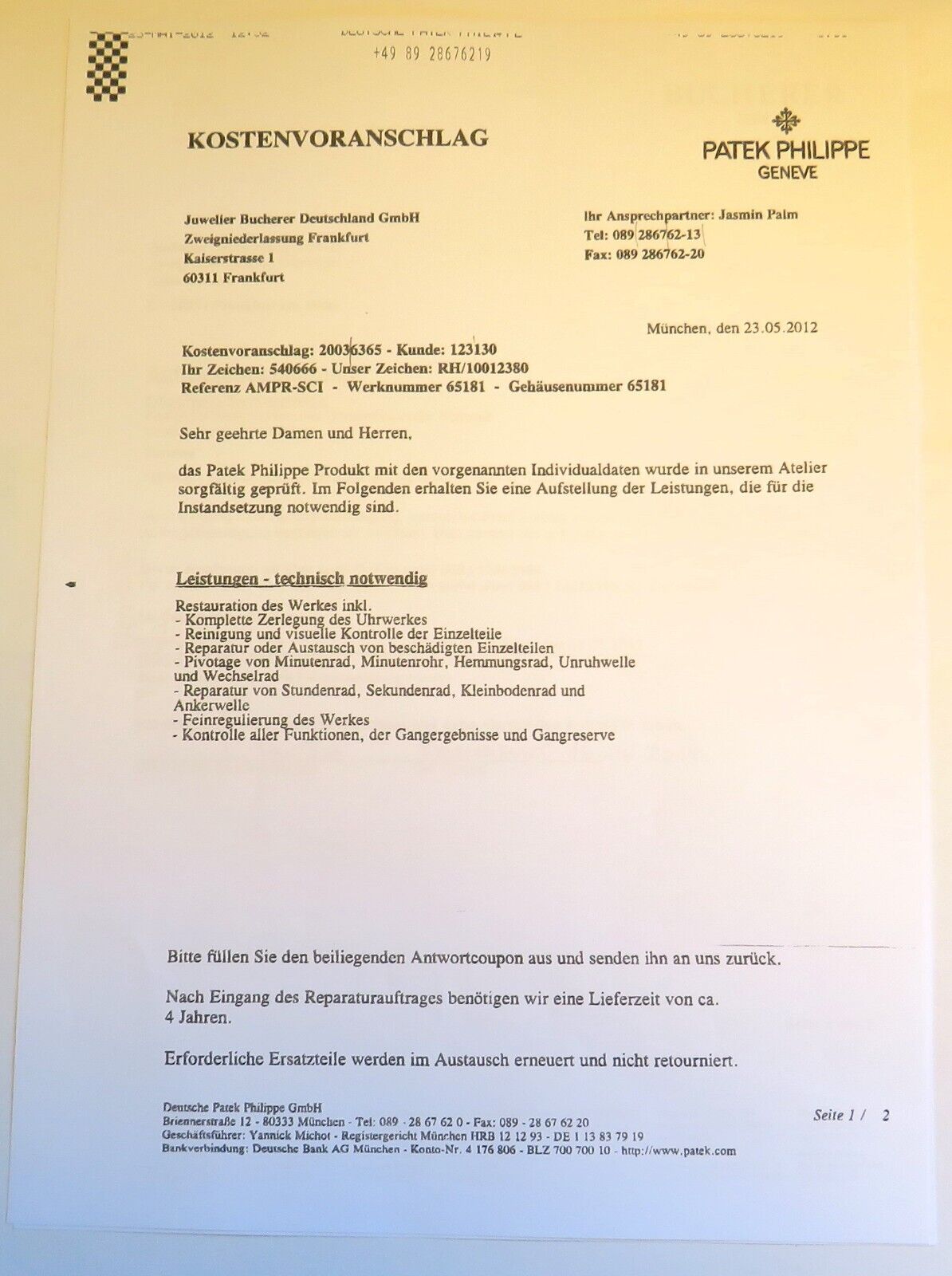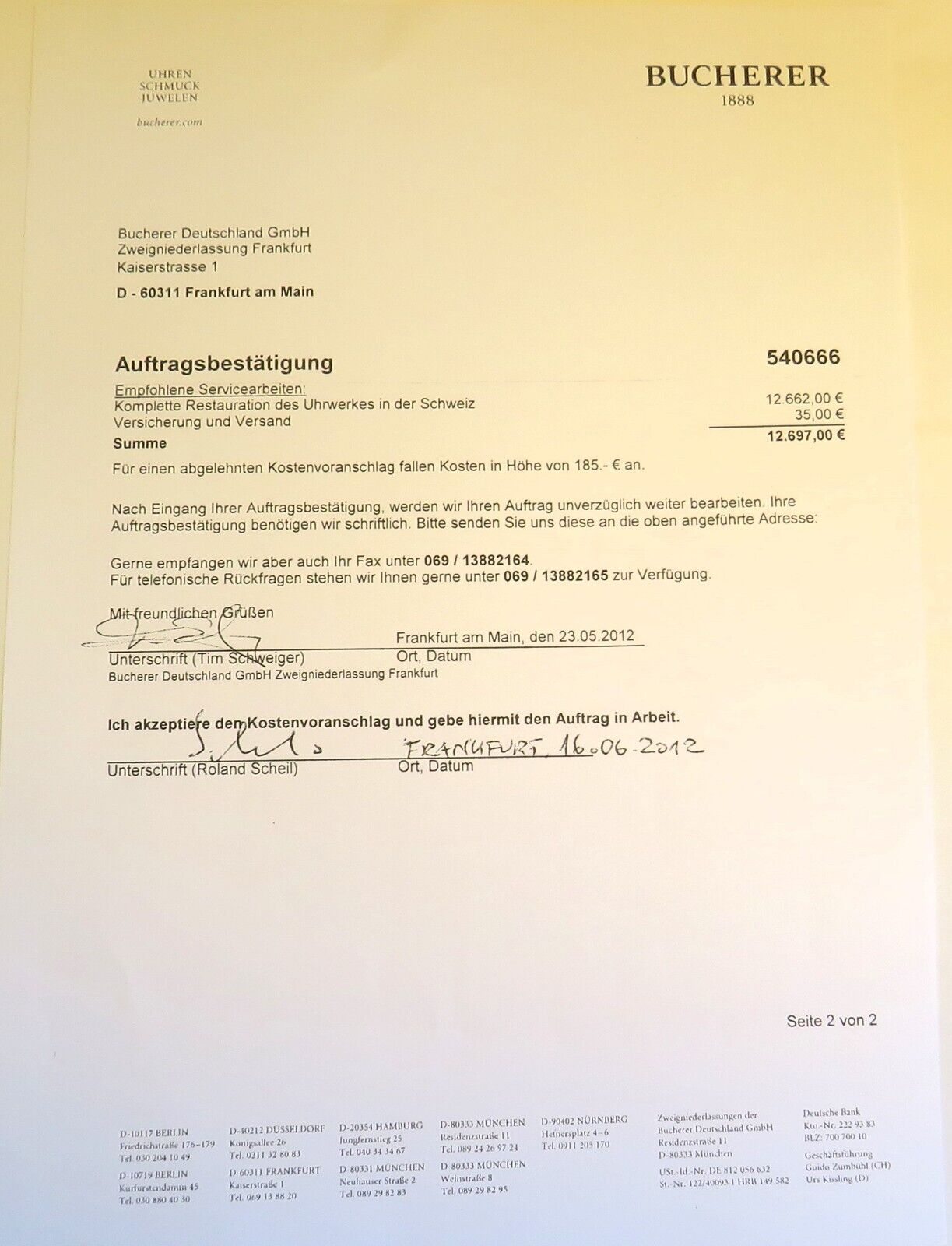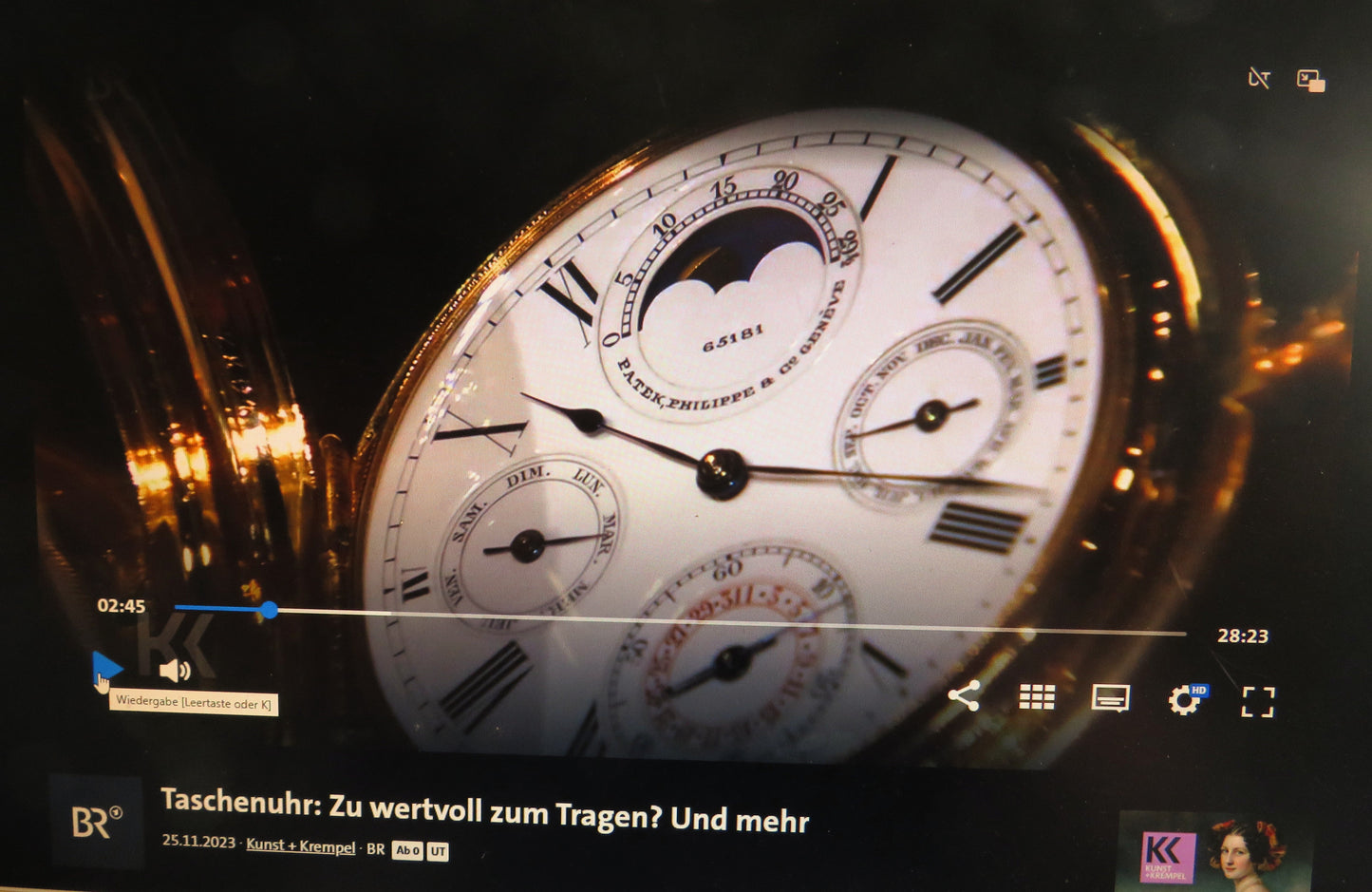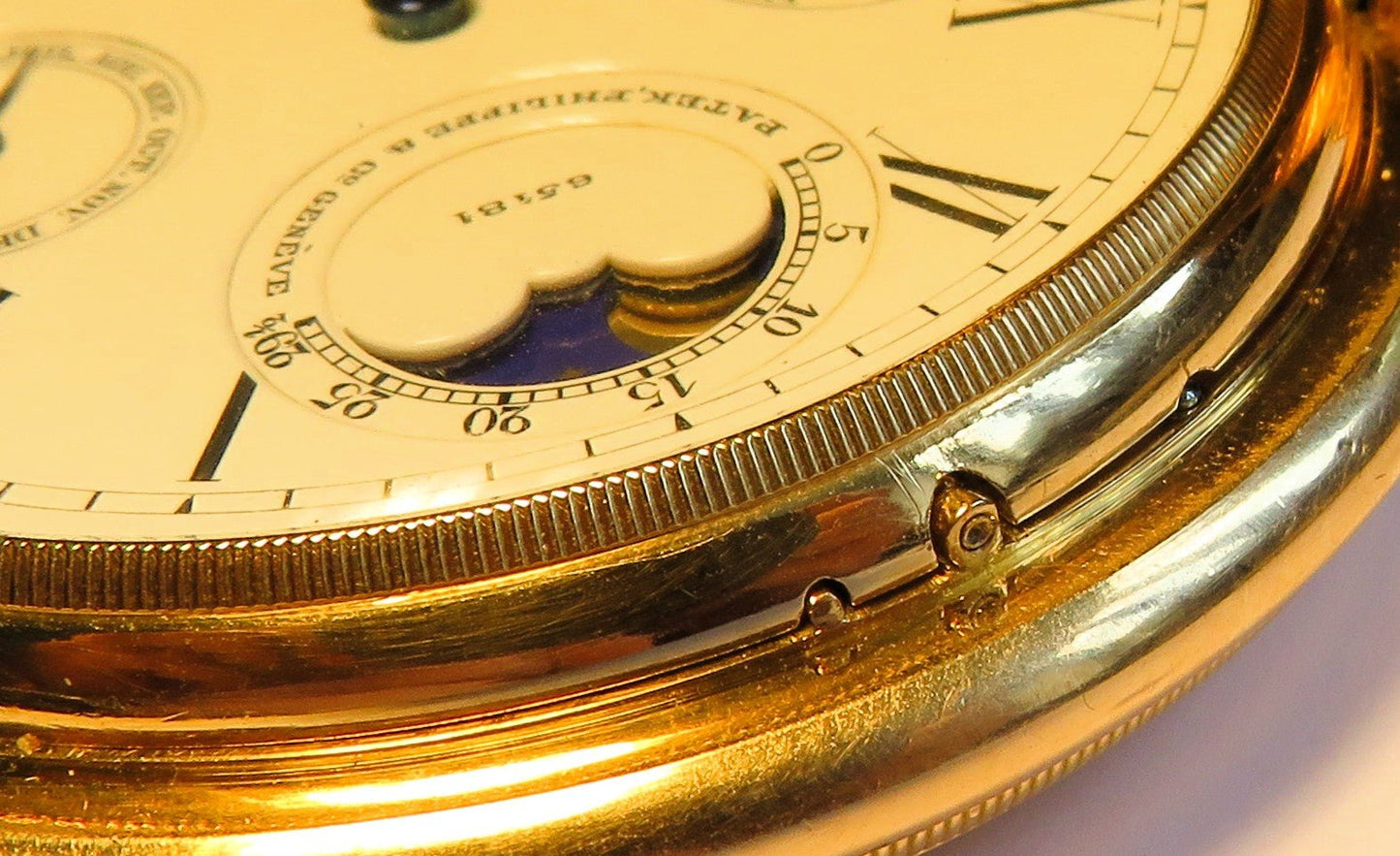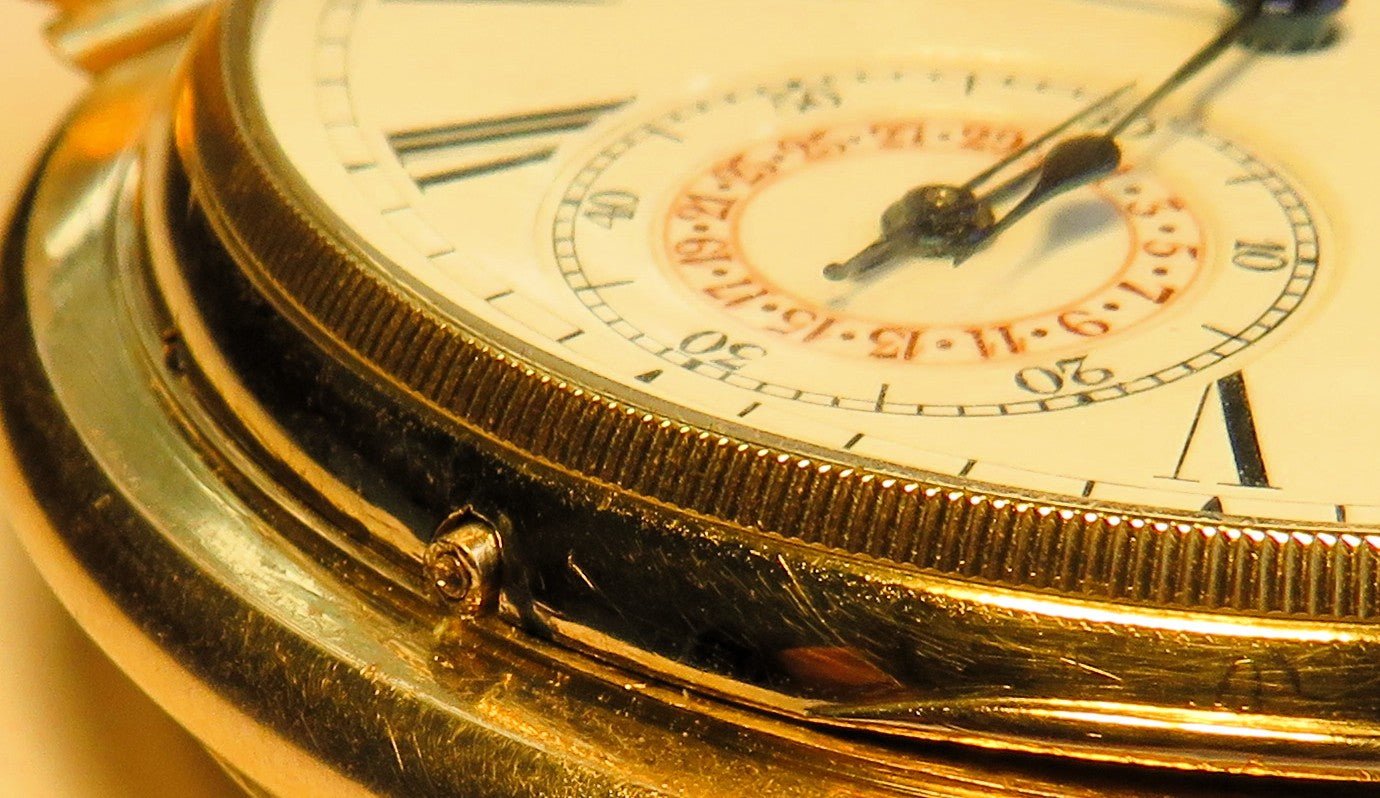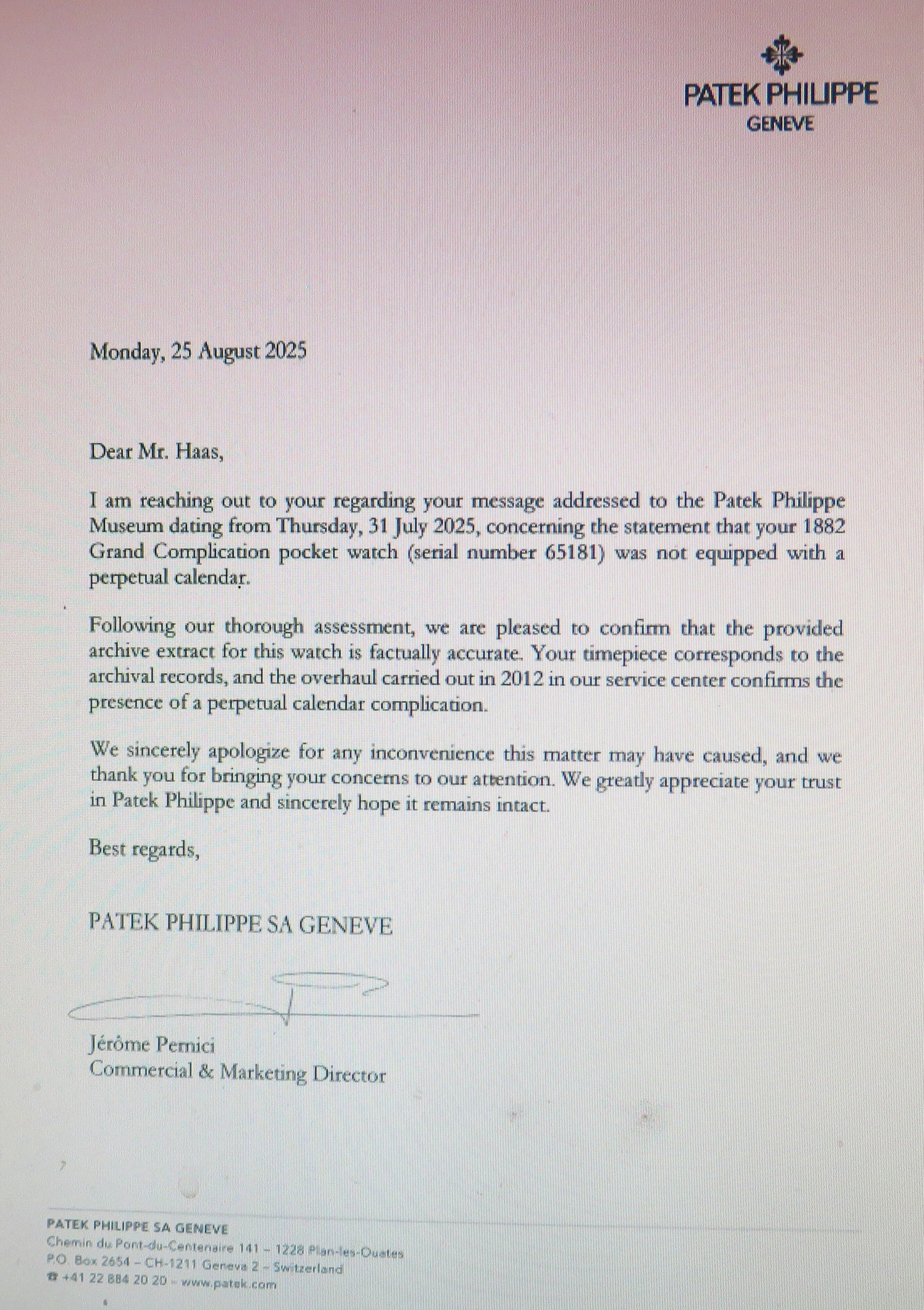1
/
of
29
Patek Philippe
PATEK PHILIPPE Grande Complication Perpetual Calendar 18K Gold
PATEK PHILIPPE Grande Complication Perpetual Calendar 18K Gold
Regular price
€69.995,00 EUR
Regular price
Sale price
€69.995,00 EUR
Keine Umsatzsteuer ausgewiesen wegen Differenzbesteuerung
Couldn't load pickup availability
Subject of the offer :
The subject of this offer is an absolutely sensational, museum-worthy artifact of the luxury watch manufacturer worldwide: Patek Philippe, one of the rarest Patek Philippe watches ever, which only comes onto the market once every decades
A solid 18K gold pocket watch Grand Complication with perpetual calendar from 1882 with original Patek archive extract
The very rare and sought-after complication "Perpetual Calendar" is the most complex complication and masterpiece that a mechanical movement can offer: day, month and date are displayed continuously and the leap year is taken into account, so the mechanism is so finely constructed that it incorporates a leap day every 1460 days without the clock having to be set or corrected due to the column wheel.
Attention: This unique artifact was completely overhauled in 2012 by Patek itself for 12,500 Euro (overhauled! not repaired! nothing was broken), see cost estimate and order confirmation in the photos
For a 140-year-old watch, a total overhaul 11 years ago was practically "recent" ... possibly the watch has not been used since then and was just lying in a safe after the expensive overhaul
Such a complex total restoration of a watch at Patek Philippe takes up to four years and is, in terms of quality, practically equivalent to a new build, meaning that this magnificent artifact is in technically absolutely top condition!
Patek Philippe is the world's finest and most valuable watchmaker, whose complicated pocket watches regularly fetch seven-figure hammer prices at specialist auctions. A Patek Philippe Grand Complication pocket watch with a perpetual calendar only emerges from the collector market every few years.
An archive extract from Patek Philippe – the "identity card" of a watch – guarantees the authenticity of the unique artifact, while repair receipts from Patek Philippe itself via the well-known luxury jeweler Bucherer (see photos) prove that it has always been well maintained.
Description:
Large pocket watch, Patek Philippe, Grand Complication with perpetual calendar and extract from the archives
Switzerland, 1882. 18 kt rose gold. Manual winding. 3 gold covers. Identical movement and case numbers: 65181, which is even printed on the dial. Polished and fluted case and cover. White enamel dial with black Roman numerals, as well as moon phase, day, month, and seconds indicators.
Blued hands. Outer covers each with monogram engraving, presumably "JTL" on the front and "TJSC" on the back. Due to the complex engineering, the case diameter is 55 mm, and the crown is 7.6 cm long.
Total weight 138, year of manufacture according to archive extract 1882, purchased 1888
Original Patek Philippe archive extract from 2023 and a copy of the Patek Philippe and Bucherer jeweler's inspection documents from 2012. The dial has a tiny, tiny, tiny crack beneath the bezel, which is only noticeable if you know it's there, and not at all when the bezel is in place.
The almost unique artifact starts and runs immediately and powerfully (accuracy not tested)
EZ: 1* - very best collector's condition, hardly any visible signs of age or wear except for the mini, mini crack under the bezel and the monograms, originality documented with Patek archive extract, technically in top condition after total restoration in 2012 by Patek Philippe
History of the watch manufacturer Patek & Co Geneve (Source: Watchwiki:
On May 1, 1839, the watch manufacturer Patek, Czapek & Co. was founded in Geneva by two Polish immigrants, the businessman and aristocrat Antoine Norbert Count de Patek and the watchmaker Francois Czapek. Due to differences between the two, however, the collaboration was discontinued. The latter continued to operate the company Czapek & Co. until 1869. Collaboration between Patek and Philippe
Patek chose the talented French watchmaker Jean-Adrien Philippe as his new partner after meeting him at the Paris World's Fair in 1844 and getting along well with him. Philippe had already enriched watchmaking history with one of its most revolutionary inventions: the crown winding mechanism. Since then, watches no longer required an additional key for winding; instead, both winding and setting the hands to the time were now performed using the far more practical crown.
On May 15, 1845, the company was renamed Patek & Co. after Jean-Adrien Philippe and Vincent Gostkowski joined the company. That same year, a patent was filed for a watch with a winding stem and hand-setting mechanism. Patek & Co. manufactured its first minute repeater.
On January 1, 1851, the name was changed from Patek & Co. to Patek Philippe & Co. In 1881, a patent for a precision fine adjustment device was filed by Philippe. Joint-stock company - and important inventions
On February 1, 1901, Patek Philippe became a public limited company and renamed Ancienne Manufacture d'Horlogerie Patek Philippe & Cie. SA. In 1902, a patent for a double chronograph was filed.
The company continued to attract attention with significant inventions. In 1925, the world's first wristwatch with a perpetual calendar was released, and in 1927, the first wrist chronographs were produced.
When the global economic crisis led to the need for a financially strong investor in 1931, brothers Charles and Jean Stern, whose dial factory had been a supplier to the company for some time, agreed to acquire a majority stake in the company. Since then, the Stern family's name has been synonymous with Patek Philippe. (Today, Philippe Stern, the third generation of the family, serves as president of the company. Thierry Stern, his son, represents the fourth generation as vice president.)
In 1932, the company introduced the Calatrava model, named after a knightly order founded in 1158 by Abbot Raimondo in the town of Calatrava. This model series has since become one of the manufacturer's classics. The Calatrava Cross, depicted on the crown, remains the trademark of the watches.
In 1937, Geneva watchmaker Louis Cottier developed the first "heure universelle" wristwatches for Patek Philippe. The dial of these world time watches could read the time in all 24 time zones of the Earth simultaneously.
In the early 1940s, series production of chronographs and wristwatches with perpetual calendars began. In the following years, Patek Philippe movements won numerous precision competitions at the Geneva Observatory.
In 1962, the world's first wristwatch with a perpetual calendar and automatic winding was introduced.
In 1966, Jean Daniel Rubeli, head of the development department, designed the Ellipse model. He considered the golden ratio in the shape of the round case. The mysterious shimmering blue of the dial was achieved by chemically treating the gold.
In 1976, the Nautilus model, designed by Gérald Genta, was launched. A distinctive feature of this watch was its porthole-shaped bezel, which, pressed onto the monocoque case with two side screws, ensured water resistance to 120 meters. Since 1977, Patek has been producing the thinnest automatic movement, Caliber 240, with a thickness of just 2.40 mm.
Today, at a time of increasing concentration in the watch sector, Patek Philippe is one of the few remaining independent watch companies. The company is also the only Geneva-based manufacturer whose entire production of mechanical watch movements bears the Geneva Seal (Poinçon de Genève).

